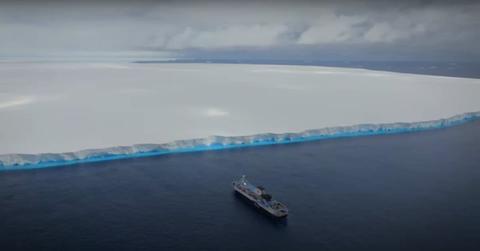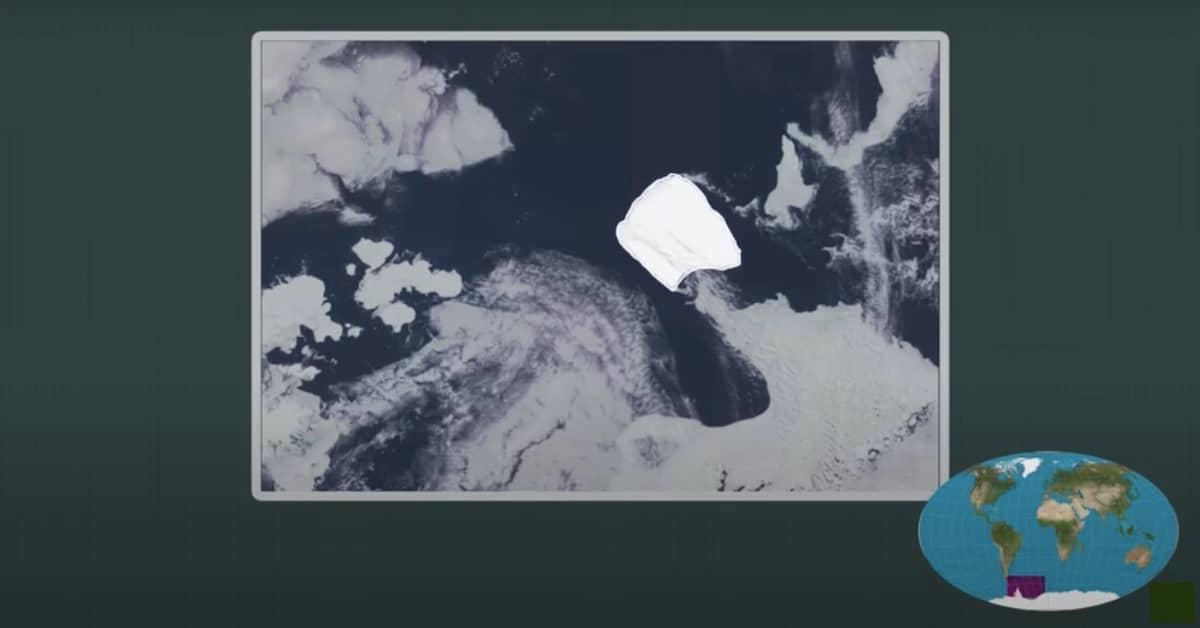Antarctica Iceberg A23a Is on the Move Again (and It Doesn’t Bode Well)
Updated Jan. 24 2024, 11:16 a.m. ET
Antarctica is home to numerous icebergs, but recently, one in particular has caught the attention of scientists. A23a, the largest iceberg in the world right now, is finally moving after being stuck to the ocean floor for over 30 years, according to a video by the British Antarctic Survey in November 2023.
Exactly how big is Antarctica iceberg A23a, and what does its newfound mobility mean for the climate crisis? We explore both of these questions below.
Antarctica iceberg A23a is incomprehensibly massive.
Antarctica Iceberg A23a is a behemoth of ice. According to The Guardian, it measures about 1,500 square miles. To put it in perspective, that's slightly larger than the U.S. state of Rhode Island, which is 1,214 square miles, per the Rhode Island state website.
Ted Scambos, a senior research scientist at the University of Colorado Boulder, told NPR that A23a weighs a trillion tons, which, he said, was "hard to comprehend."
BBC also reported that satellite measurements show the iceberg to have a total average thickness of just over 2920 feet. In short, A23a is incredibly massive, which isn't a good thing now that it's on the move.
What does A23a’s mobility mean for the climate crisis?
According to Down to Earth, A23a, which broke off from Antarctica's Filchner Ice Shelf in August 1986, is now drifting beyond Antarctic Waters along a path known as "iceberg alley” and will eventually melt and disappear in the Southern Ocean.
Antarctica is a massive landmass covered in ice, and as it melts, it contributes to rising sea levels each year. Martin Siegert, professor of geosciences and deputy vice-chancellor at the University of Exeter, explained for Down to Earth, “There’s a real danger in the years ahead that Antarctica stops acting as a refrigerant for the planet and starts acting as a radiator.”
World Meteorological Organization (WMO) Secretary-General Petteri Taalas echoed these concerns at COP28, and they were later reiterated in a WMO press release. “Sea level rise accelerated, sea ice reached new lows and ocean heat and acidification increased" between 2016 and 2022 alone.

How does iceberg A23a affect ocean life?
Reuters reported that there is a chance that A23a could get stuck near South Georgia Island, which would pose a problem for the animals that live in Antarctica.
Countless marine animals rely on the island and nearby waters. If A23a blocks their path, Reuters explains that they won't be able to reach either, which could put various species in danger.
Ultimately, action needs to be taken now to limit the risks of a climate that becomes increasingly inhospitable in the coming decades. Humans must prioritize sustainable living practices and reduce carbon emissions to protect Antarctica's fragile ecosystem.

